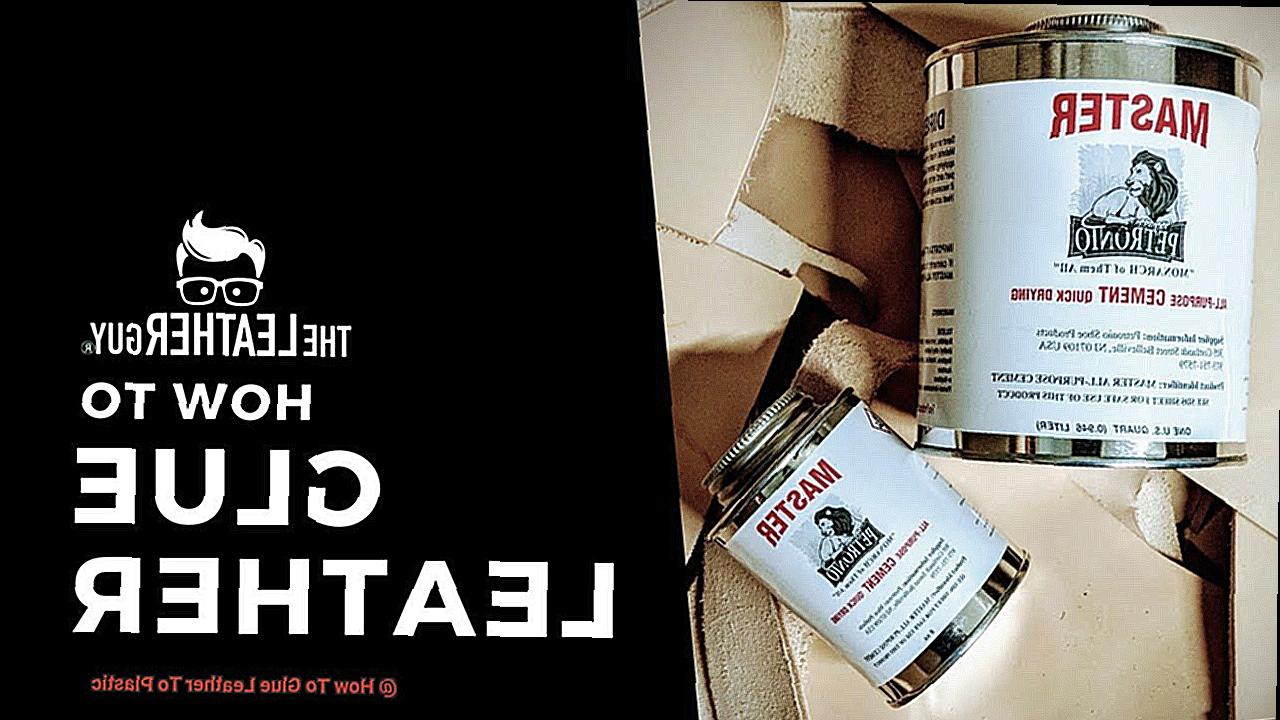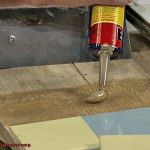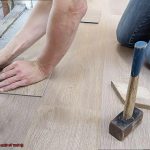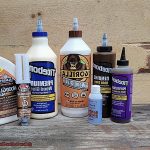Have you ever found yourself in a bind, wondering how to glue leather to plastic? Whether it’s repairing a torn car seat or adding a touch of sophistication to your favorite plastic tote bag, the good news is that it’s possible. With the right tools and techniques, you can achieve impressive results that will leave your friends and family impressed.
At first glance, gluing leather to plastic might seem like an unlikely pairing. But don’t be intimidated. The secret lies in choosing the perfect adhesive for the job. Not all glues are created equal, and some may not hold up over time or even cause discoloration or other damage to your materials.
In this blog post, we’ll explore the best way to glue leather to plastic using different types of adhesives. From tried-and-true contact cement to trusty hot glue and epoxy, we’ll cover it all. We’ll also give you tips on how to prepare your surfaces for bonding by sanding and cleaning the plastic and treating the leather with a conditioner or rubbing alcohol.
By the end of this post, you’ll have all the information you need to confidently tackle your own leather-to-plastic project. So get ready to transform your old or lackluster plastic items into stylish and functional pieces that combine the durability of plastic with timeless appeal of leather. Don’t wait any longer – let’s get started.
Why Choose the Right Adhesive?
Contents
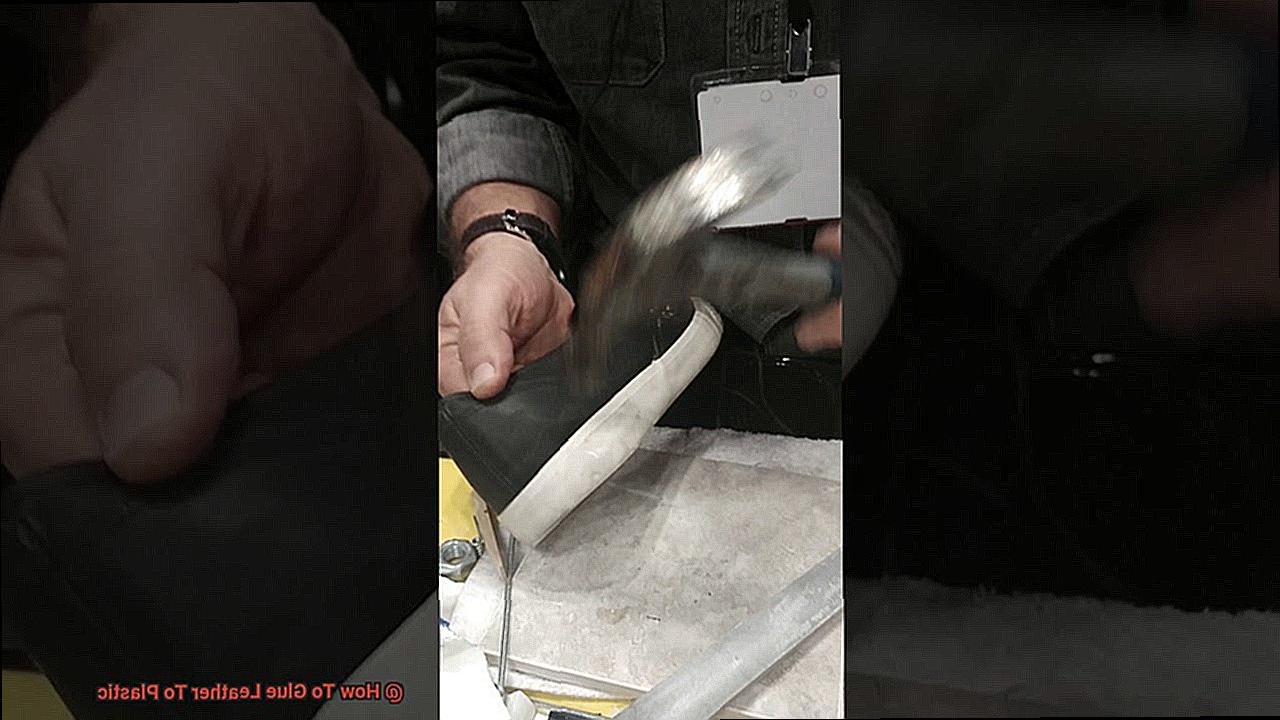
When working on a project that involves gluing leather to plastic, choosing the right adhesive is absolutely crucial. The wrong adhesive can result in a weak bond that will eventually break apart, leaving you with a project that’s anything but seamless. To avoid this, it’s important to consider the materials you’re working with and the conditions the bond will be exposed to.
One of the most common mistakes people make is assuming that a general-purpose adhesive will do the job. However, leather is a porous material while plastic is non-porous. This means that the adhesive needs to be able to penetrate the leather and create a strong bond with the plastic. If you choose an adhesive that isn’t up to this task, your bond may fail before you’ve even finished your project.
Another factor to keep in mind is flexibility. Leather and plastic can expand and contract at different rates when exposed to changes in temperature and humidity. If your adhesive isn’t flexible enough, it may crack or break under these conditions, weakening or even breaking your bond completely. This could lead to costly repairs or even starting over from scratch.
Last but not least, it’s important to select an adhesive that’s suitable for the specific type of plastic you’re working with. Some plastics, such as polypropylene and polyethylene, can be notoriously difficult to bond. In these cases, specialized adhesives designed specifically for these types of plastics may be necessary for a strong and long-lasting bond.
By taking the time to choose the right adhesive for your project and carefully following the manufacturer’s instructions, you can ensure that your bond between leather and plastic will be strong and successful.
What Adhesive is Best for Glueing Leather to Plastic?
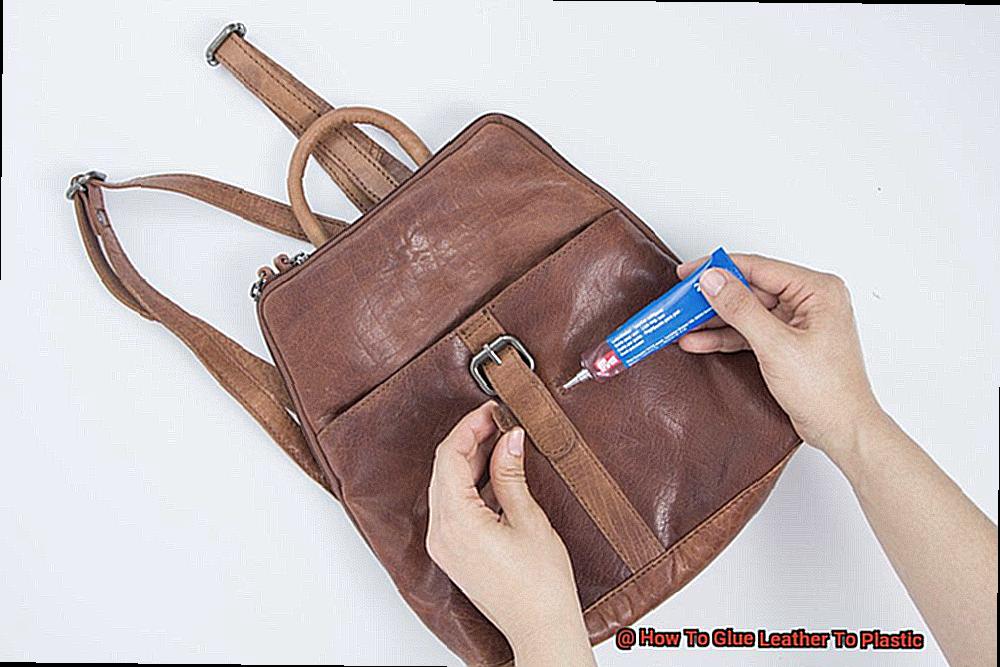
Choosing the right adhesive is paramount for a strong and long-lasting bond between these two materials. You don’t want to use an adhesive that will fail over time, causing all your hard work to go down the drain. Fear not, because we’ve got you covered with some of the best adhesives for gluing leather to plastic.
Epoxy comes first on our list. This adhesive is known for its strength and durability, making it an excellent choice for bonding a variety of surfaces, including plastic and leather. However, it’s essential to follow the instructions carefully when using epoxy to ensure a strong bond that won’t fail.
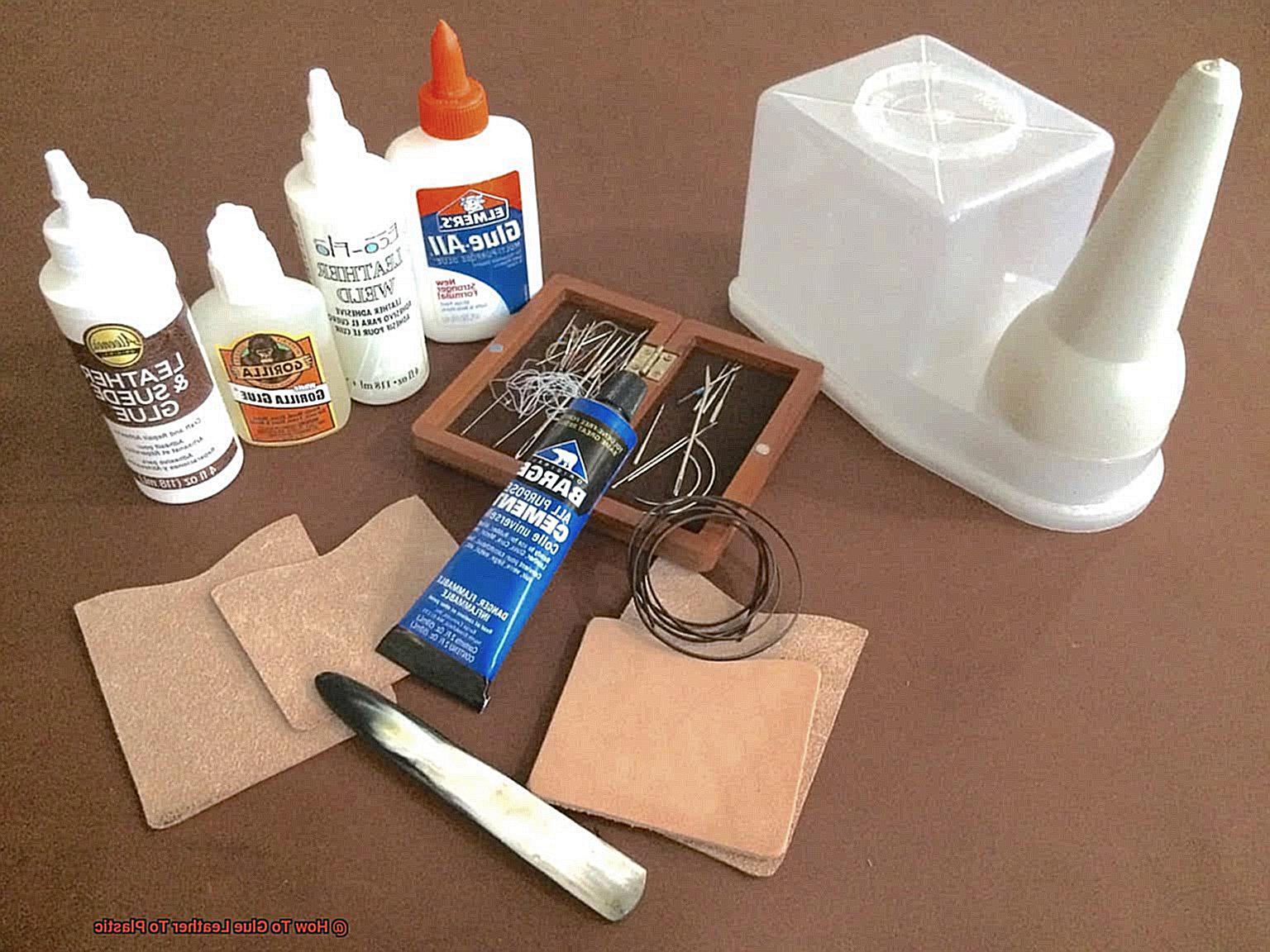
Contact cement is another great option specifically designed for bonding leather and other materials to plastic. It provides a strong and flexible bond that can withstand wear and tear, perfect for projects that demand long-lasting durability.
Super glue, also known as cyanoacrylate, is a quick and easy option that can bond leather to plastic in no time. However, it may not be as strong as other adhesives and may not hold up well over time, so it’s best to reserve it for lighter duty projects.
If you’re looking for an adhesive that can stand up to moisture or extreme temperatures, silicone adhesive is your go-to choice. This type of adhesive creates a flexible and durable bond between leather and plastic that can withstand harsh conditions.
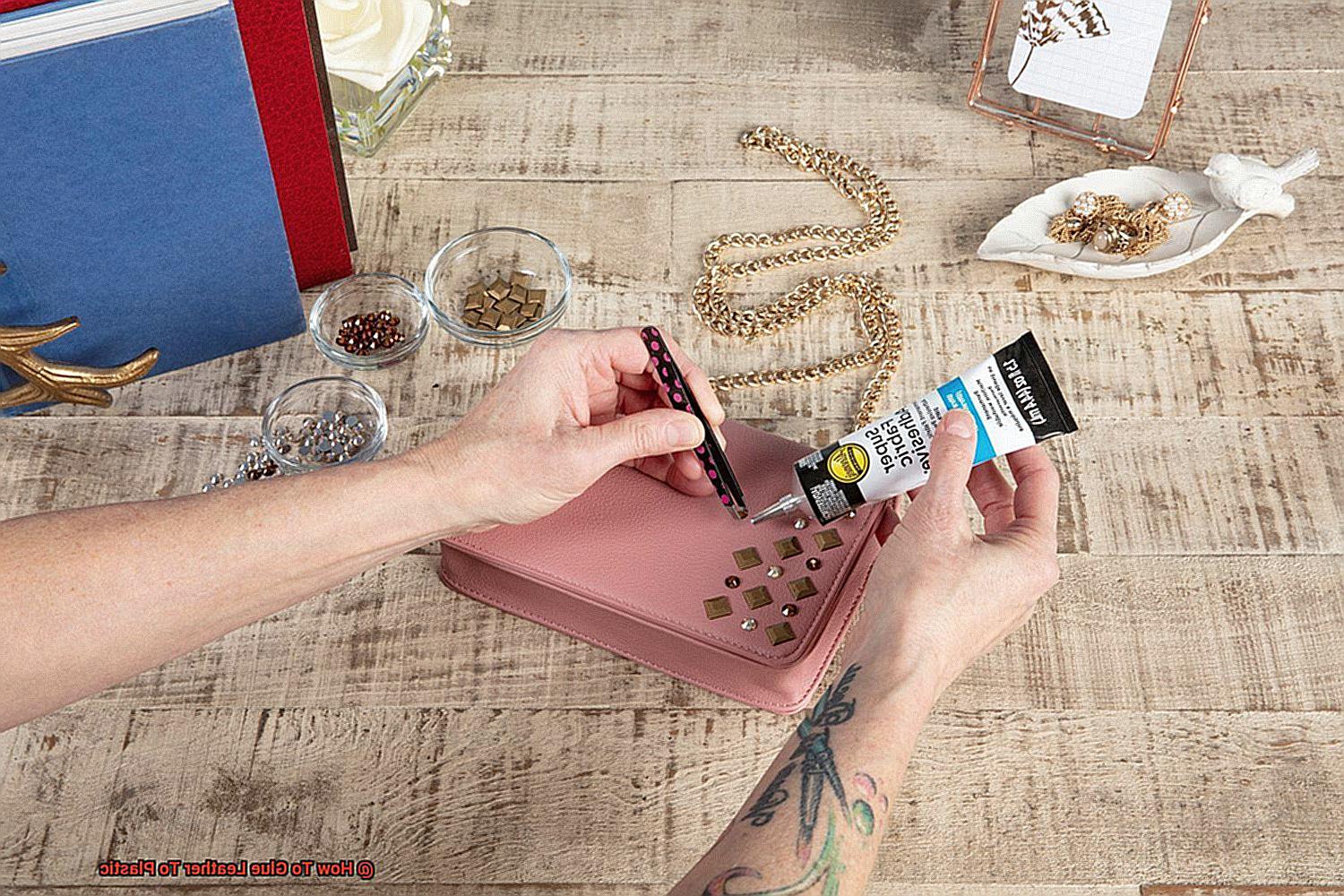
When selecting the right adhesive for gluing leather to plastic, it’s crucial to take into account the specific materials you’ll be working with and the conditions the bond will be exposed to. Always follow the instructions carefully and allow sufficient drying time before handling the bonded materials.
Pre-Gluing Preparation
Before you start, it’s important to know that pre-gluing preparation is key to ensuring a strong and long-lasting bond between the two materials. Let’s take a look at the steps involved in this process.
Firstly, cleaning both surfaces is crucial. For the leather surface, use a mild soap and water solution and a soft cloth. Abrasive tools and harsh chemicals can damage the leather, so it’s best to avoid them. When cleaning plastic surfaces, use a degreaser or rubbing alcohol and a clean cloth to remove any grease or oil. Make sure to wipe the surface thoroughly and allow it to dry completely before proceeding with gluing.
Once the surfaces are clean, the next step is to roughen them up. This can be done with sandpaper or a wire brush, which helps create a better bonding surface for the glue. It’s important to roughen up both the leather and plastic surfaces evenly without causing any damage.
Choosing the right adhesive is also essential for successful bonding. Look for adhesives specifically designed for gluing leather to plastic, such as contact cement or super glue. Always follow the manufacturer’s instructions and apply the glue evenly across both surfaces.
In summary, pre-gluing preparation involves cleaning both surfaces, roughening them up, and choosing an appropriate adhesive. By following these steps, you can ensure a strong and long-lasting bond between your leather and plastic materials. Remember to be patient during this process by following instructions carefully and allowing sufficient drying time for the glue to set properly.
Applying the Adhesive
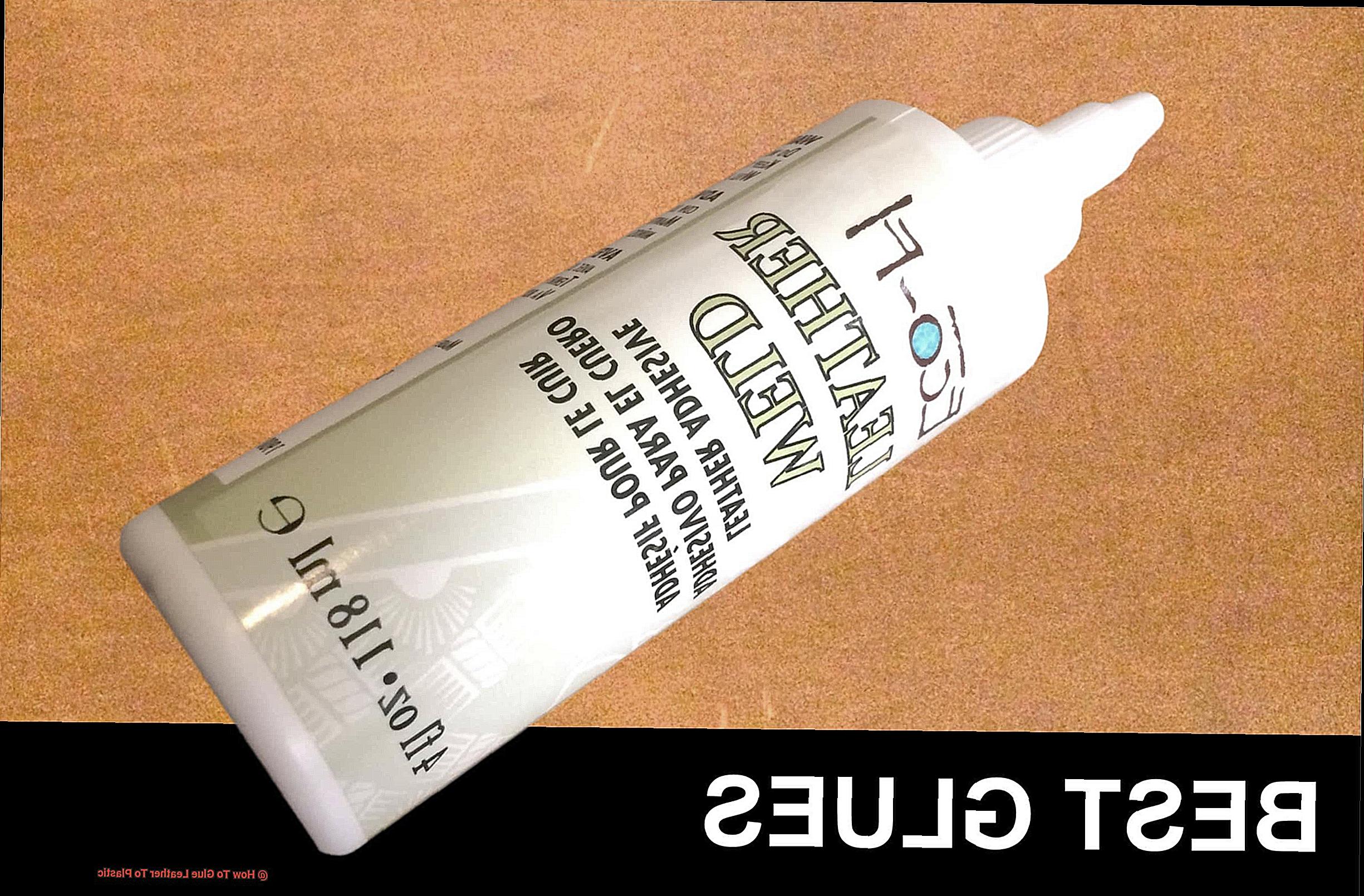
If you’re looking to create a strong and durable bond between leather and plastic, applying the adhesive correctly is crucial. But don’t worry, with these simple steps, you’ll be a pro in no time.
First things first – make sure you’re working in a well-ventilated area and wearing protective gloves to avoid any contact with the adhesive. Then, ensure that both surfaces are clean and dry. Use rubbing alcohol on the plastic surface, and for leather, use a leather cleaner or a damp cloth to remove any dirt or dust particles.
When it comes to applying the adhesive, less is more. Use a small brush or cotton swab to apply it evenly on both surfaces, ensuring that it covers the entire surface evenly. Carefully place the leather onto the plastic surface, ensuring that it’s aligned correctly. Gently press down on the leather surface to guarantee that it adheres well to the plastic surface.
If there are any bubbles or wrinkles, don’t panic. Use a roller or credit card to smooth them out gently. Wipe away any excess adhesive using a damp cloth or paper towel.
Drying Time and Placement of Leather
Gluing leather to plastic is a great way to create a unique and lasting product. However, to achieve a professional and sturdy bond, you need to take the drying time and placement of the leather into consideration.
Firstly, the drying time of your adhesive is crucial. Each type of adhesive has its own drying time, and the environmental conditions also play a role. Rushing this process can result in a weak bond that won’t last over time. Therefore, it’s best to allow at least 24-48 hours for the adhesive to fully cure, ensuring maximum effectiveness.
Secondly, placing your leather correctly before the adhesive dries is essential. Once you’ve applied the adhesive, you only have a small window of time to adjust the position of the leather before it sets in place. So be patient and take your time during this step. Carefully position the leather to avoid any wrinkles or creases that could detract from the final product.
Finally, consider the weight of your leather as it can affect the bonding process. If you’re working with heavier leather, use additional adhesive or clamps to keep it in place while it dries.
Pressing Down with a Roller or Similar Tool
This technique evenly distributes the adhesive and prevents pesky air pockets from forming between the two surfaces.
To use this method effectively, it’s crucial to apply even pressure throughout the surface area. You don’t want to miss any spots. However, be careful not to apply too much force that could potentially damage your materials. It’s also important to consider the type of adhesive you’re using, as some require more pressure than others. Always refer to the manufacturer’s instructions for guidance.
By taking the extra step of using a roller or similar tool, you’ll achieve an even distribution of adhesive and create a secure bond that will last for years to come. This method ensures that no areas are missed and that the adhesive is evenly spread across the entire surface.
In conclusion, if you’re looking to create a unique product by gluing leather to plastic, remember that pressing down with a roller or similar tool is a crucial step in the process. By applying even pressure and following the manufacturer’s instructions carefully, you can achieve a strong and durable bond that will stand the test of time.
Tips and Tricks for Glueing Leather to Plastic
Fear not. With the right tips and tricks, you can create a strong and long-lasting bond between your leather and plastic surfaces. Here are five subtopics to guide you through the process:
Choose the Right Adhesive
Choosing the right adhesive is crucial for a strong bond. A contact cement or cyanoacrylate (super glue) is the best option for gluing leather to plastic. However, keep in mind that some adhesives work better on certain types of plastic than others, so do your research beforehand.
Clean Thoroughly
Before applying any adhesive, it’s important to clean both the leather and plastic surfaces thoroughly. Dirt, dust, or oils can prevent the adhesive from sticking properly. Use a cleaning solution and a lint-free cloth to wipe down the surfaces. Additionally, roughing up the plastic surface with sandpaper can improve adhesion.
Follow Instructions Carefully
When applying glue, always follow the manufacturer’s instructions carefully. Apply a thin layer of glue to both surfaces and let it dry for a few minutes until it becomes tacky before pressing both surfaces together firmly. Be careful not to apply too much pressure as this could cause the leather to stretch or become misshapen.
Work in Sections
If you’re working with large pieces of leather or plastic, it may be necessary to work in sections to ensure an even bond. Apply the glue and press down one section at a time, working your way across the surface until everything is bonded. You may also want to clamp or tape the pieces together while the adhesive dries for added stability.
Be Patient
Finally, be patient and allow the glue to dry completely before using your newly bonded leather and plastic item. Rushing this step can cause the bond to weaken or fail altogether, so wait until the glue has fully cured according to the manufacturer’s instructions before putting any stress on the bond.
dOS05PbEduM” >
Conclusion
To wrap up, don’t let the idea of gluing leather to plastic intimidate you. With the right tools and techniques, you can achieve a strong and long-lasting bond. The key is selecting the appropriate adhesive for your specific project, taking into account the materials involved and the conditions it will face.
It has provided valuable insights into various adhesives that work well for bonding leather to plastic. We’ve also shared essential tips on surface preparation, such as sanding and cleaning the plastic, as well as conditioning or using rubbing alcohol on the leather.
By following these guidelines, you’ll be able to revamp old or unremarkable plastic items with a touch of timeless elegance from leather. Remember to choose wisely when it comes to adhesives, follow instructions diligently, clean thoroughly before bonding, and exercise patience while waiting for glue to dry completely.

